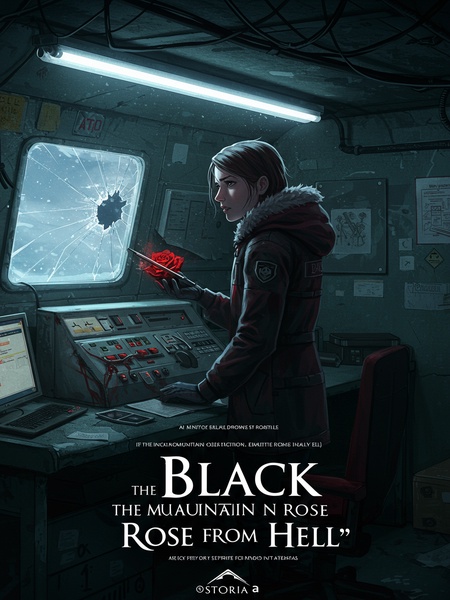Chapter 4: The Edge of the World
A few hours later, our bus reached Hobart Port.
The salty air bit at my cheeks as we stepped off. Floodlights threw harsh shadows across the water.
A dozen or so buses lined up, and experts and security teams from various countries disembarked and boarded a research vessel:
The dock was a Babel of languages—Spanish, Mandarin, Russian, English with every accent you could imagine. Uniformed guards checked badges as we filed on.
The Resolute, 400 feet long and 70 feet wide—America’s newest polar research vessel.
It gleamed under the lights, all business and steel. I’d seen it once in a documentary, but in person, it looked like something NASA would send to Europa.
After the quake, massive glaciers in the Antarctic Circle had collapsed, so we needed the Resolute to break through the ice to reach the pole.
On deck, I watched as cranes loaded snowmobiles and strange instruments I’d only ever read about.
In the meeting room, over a hundred experts had gathered.
Coffee and nervous chatter filled the air. The walls were plastered with charts, emergency evacuation maps, and a huge U.N. flag.
An elderly Argentine expert took the stage, his heavy Latin American accent filling the room:
He tapped the microphone with knobby fingers. His voice was commanding, even as his hands shook just a little.
"The 11/11 Antarctic earthquake registered a surface-wave magnitude of 12.0 Ms and a moment magnitude of 12.4 Mw.
He paused to let that sink in. Most of us already knew, but hearing it aloud made it feel heavier.
"Seismic stations in multiple countries recorded the waves. By calculating the time differences, we confirmed the epicenter was at the South Pole."
There was a ripple through the crowd. Some muttered under their breath, others scribbled furiously in notebooks.
Though most experts already knew this, the room erupted in shocked discussion.
People traded rapid-fire theories, some gesturing at maps, others texting colleagues back home. The hum of debate felt almost comforting—a small piece of normalcy amid chaos.
As everyone knows, earthquakes are vibrations caused by the release of energy in the Earth’s crust.
A few of the newer researchers nodded, pretending to take notes. I saw Dr. Reynolds roll her eyes at the basics.
According to their causes, earthquakes are usually classified as tectonic, volcanic, collapse, induced, or artificial.
The PowerPoint advanced with neat bullet points, but it felt like a lecture for a freshman geology class. Maybe it was for the media folks in the back.
The most common are tectonic earthquakes, caused by plates squeezing and colliding, creating faults and ruptures.
I could recite this in my sleep. Still, something about hearing it now, after what had just happened, made my skin crawl.
Back in 2020, King George Island at the edge of the Antarctic Plate experienced a sustained volcanic earthquake:
He pulled up a slide—photos of a lonely, icebound station rocked by months of tremors. It looked almost peaceful by comparison.
Over four months, King George Island endured 85,000 quakes, and the island itself shifted by four inches.
It was wild to think the earth could move an entire island, and yet compared to now, that felt almost quaint.
Experts determined this was caused by the eruption of the Orca seamount at the bottom of the Bransfield Strait.
I’d written a paper on that event in college. Never thought I’d see something even more bizarre.
But... the South Pole sits in the middle of the plate.
No fault lines, no volcanoes, nothing. Just ice on rock on ice. That’s what made this so impossible.
There are no plate collisions, no volcanoes, no underground caverns, no mining, and certainly no intelligent beings down there making earthquakes.
The room was silent again. Someone in the front row crossed themselves, whispering a prayer.
The Argentine expert played the next set of data, revealing another mystery:
A color-coded cross-section of the Earth’s interior flickered onto the screen.
"According to our computer models, the preliminary focal depth is 430 miles."
Murmurs broke out instantly. I gripped my seat. That was... impossibly deep. The mantle, not the crust. The kind of depth you only saw in disaster movies.
Continue the story in our mobile app.
Seamless progress sync · Free reading · Offline chapters